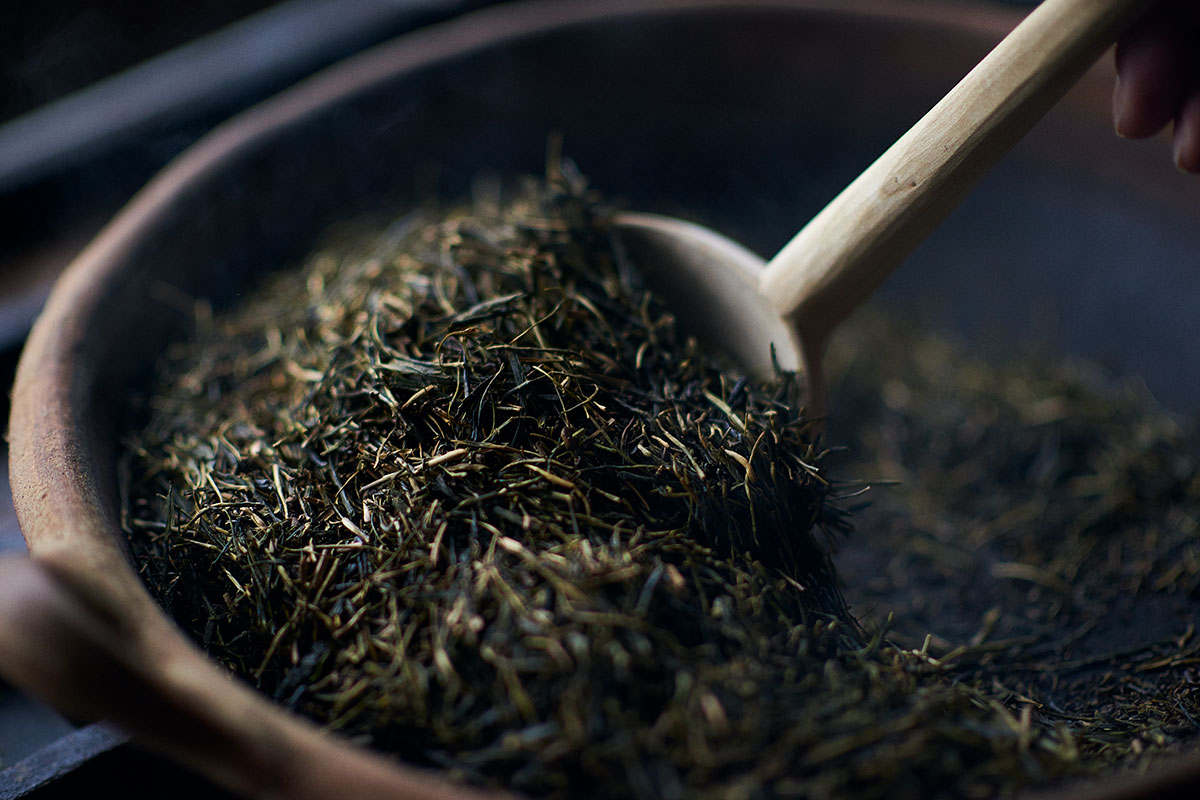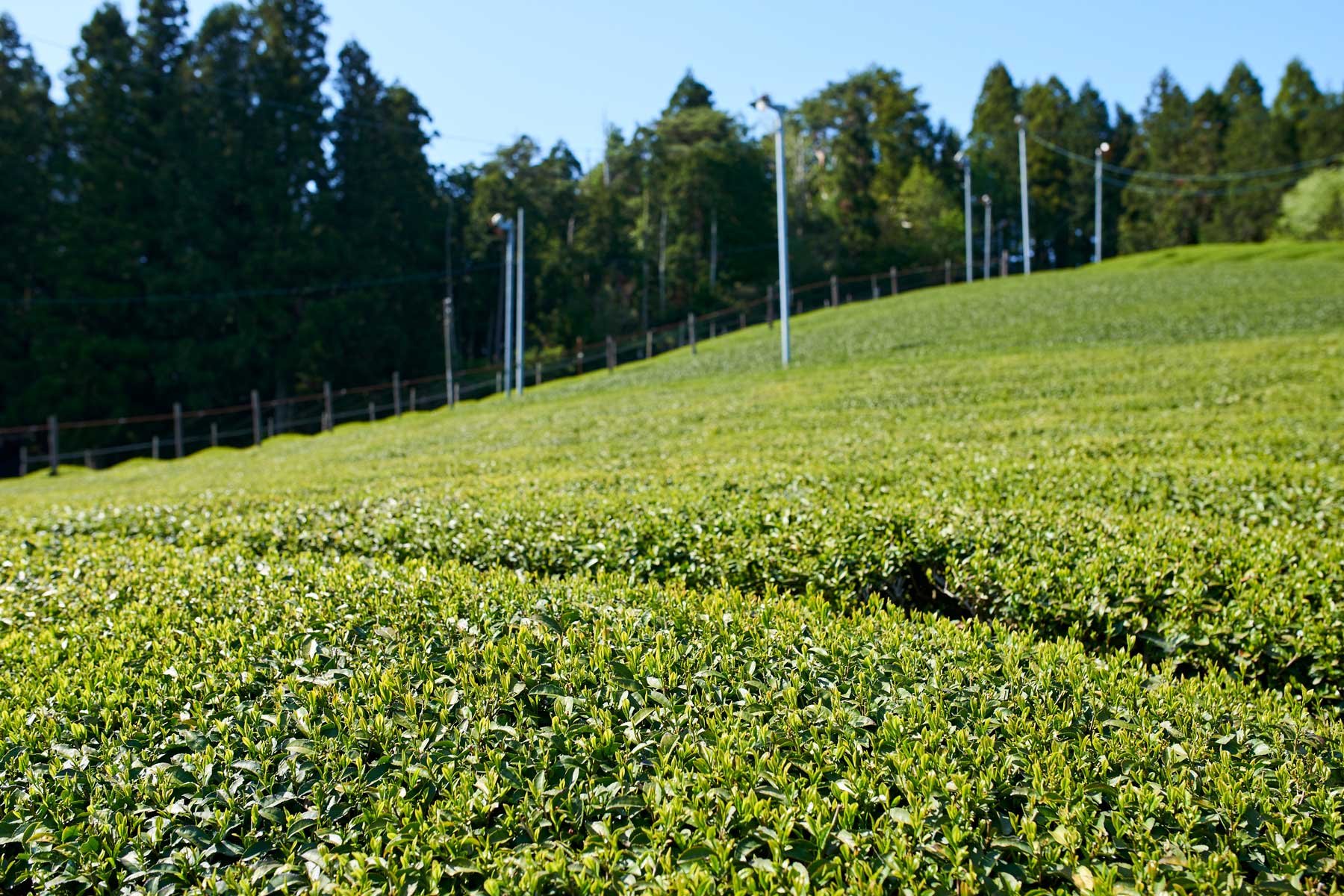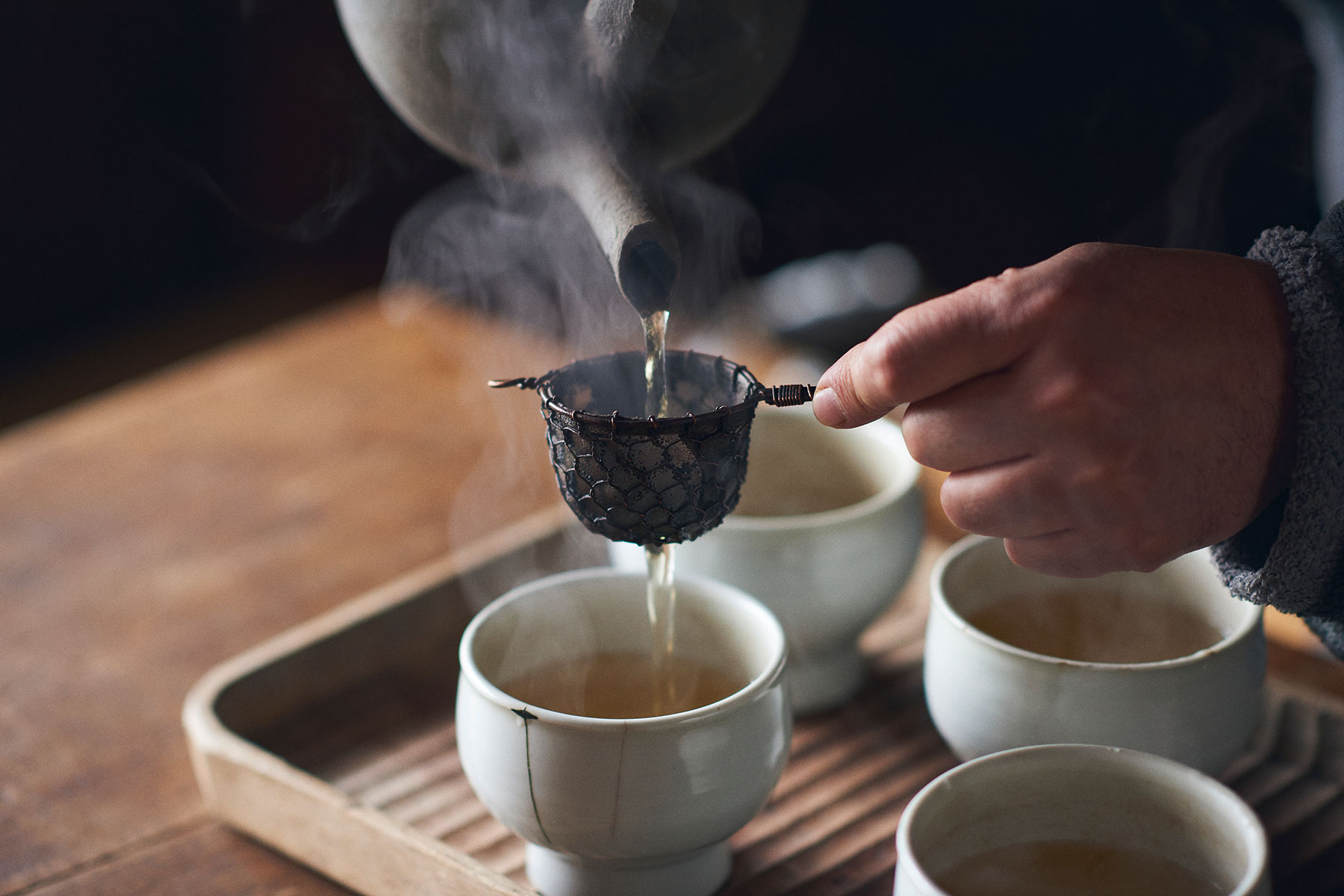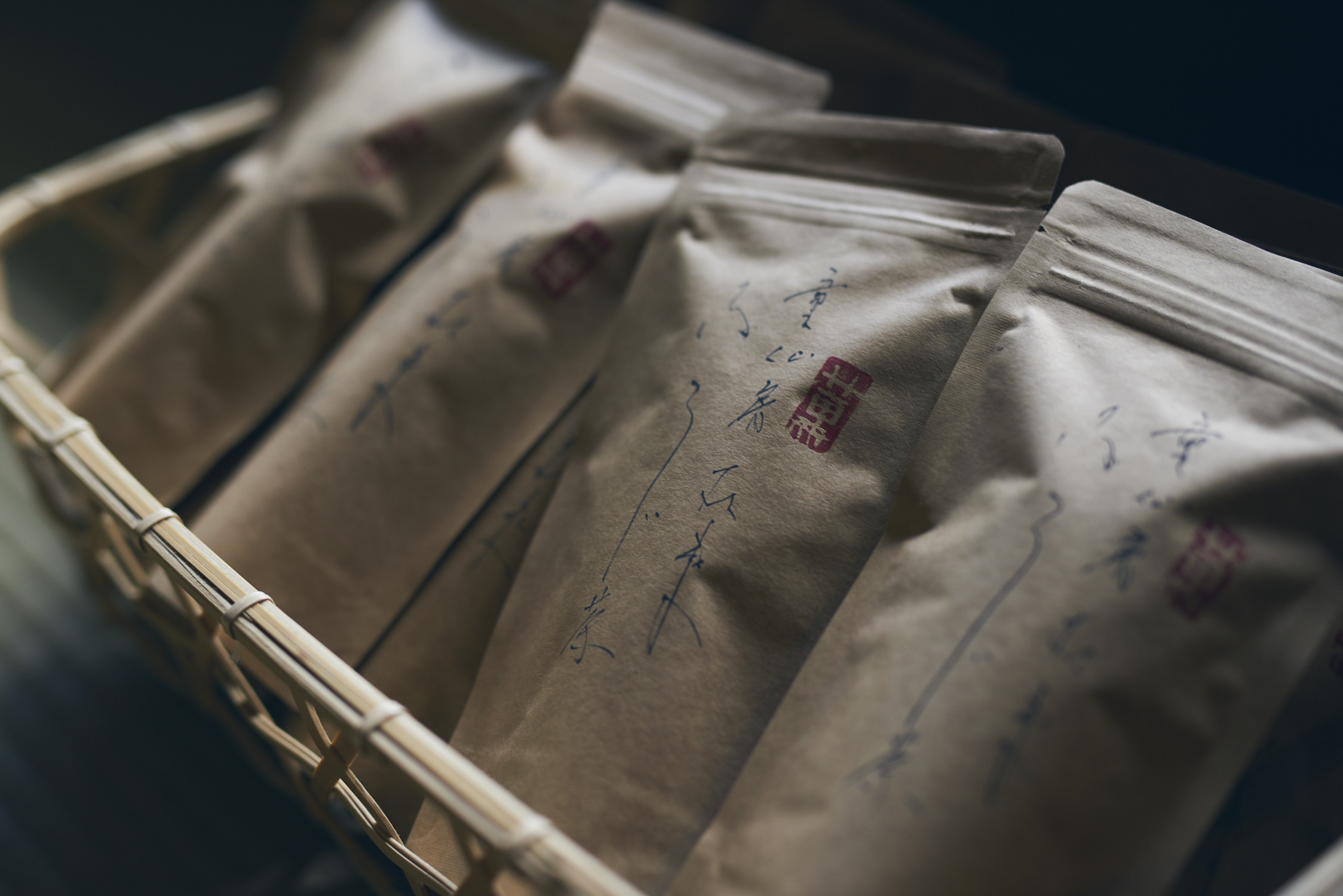Dosenbo Tea

I produce hojicha (roasted green tea) with the leaves of seed-grown tea plants. I use the softest buds, the so-called first flush, that appear around May. When they are roasted, they give off a very fragrant aroma. A gentle flavor is another distinctive feature of seed-grown tea.
I am supplied with the tea leaves by Yoshihiko Yuki, who grows tea in the Dosenbo district of Minami-Yamashiro Village, Kyoto Prefecture. About 150 years ago, settlers came to Dosenbo and cleared the land for farming. Because Dosenbo lies about 500 meters above sea level, there is a large temperature gap between morning and evening, and this led to extensive cultivation of tea. I have heard that the Dosenbo tea was even exported to other countries in the Meiji era. Initially, the settlers all lived in a row house structure built for them. Subsequently, the land was parceled out, and they each constructed their own houses. I heard that it all took a lot of time. There was no heavy machinery around in those days, and the work began with clearing forested land in the hills. The difficulties beggar the imagination. The tea plantations were made in those pioneering days. Today, there are only about half as many tea farmers, and only a few of them are growing tea from seeds. Cultivation of seed-grown tea has a low productivity, because the plants do not all bud at once, and the leaves have differing shapes and colors. Moreover, seed-grown tea is traded in the market at low prices. It entails more time and trouble, and farmers are shifting away from it.

Nevertheless, we wanted to continue drinking tea made from seed-grown tea. To enable Yuki to continue growing it, I decided to buy his entire crop of seed-grown tea leaves. I am also offering cups of tea made with it to people at exhibitions and other venues in diverse parts of the country. Enjoyment of it is at last gradually widening.
The amount of tea leaves I purchase is slowly increasing and now comes to about 100 kilograms per year. I purchase once a year, during the first-flush season, and roast the leaves in response to orders. If you exercise care in storage, hojicha will definitely keep for at least one year. When roasting the leaves in an earthen pot, I closely watch the change in their appearance and also listen to the sound they make, in order to preserve the flavor of the new buds.
Roasting leaves of seed-grown tea to make hojicha has now become a part of my life work. I might add that, to me, tea is linked with ceramics. Firing pieces molded of clay from a certain locale and making tea by roasting leaves of plants grown from seeds in a certain locale - the two are like each other.
I never tire of creating ceramics, and enjoy a good cup of tea every time I have one. I think this is why I continue making both.

